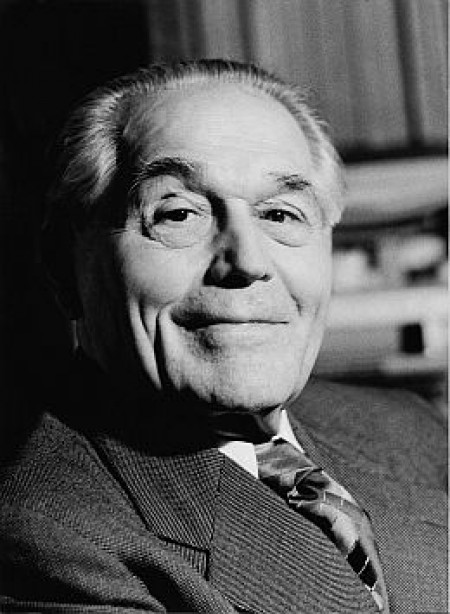
23 October 1891, Mátisfalva – 25 January, 1978, Budapest
Imre Palló was József Sík's pupil at the Music Academy between 1911-1916. He made his debut at the Opera House in 1917. From the beginning of his career he sang important roles and by the early twenties he was the Opera's leading baritone, particularly outstanding in the lyric baritone roles. His wonderful diction, his voice, balanced in every register, beautiful, velvety tone, his handsome figure and ability to identify with his role made him a great favourite with the audiences. Palló was most truly himself in Verdi's great lyric roles: he was an unsurpassed Rodrigo, Luna, Simon Boccanegra (a role which he was the first to sing in Hungary, as he was also the first to sing Falstaff here). In 1925/26 he was a member of Mascagni's world-touring stagione. At the end of the tour he spent almost a whole year in Milano, where he studied with the excellent Mario Sammarco, and visited the La Scala performances almost every night. After a year – as later on also every time – he came home. "My roots go deep into the Hungarian soil and I could not envisage any other land where I could permanently settle."
His individuality and Transylvanian, Székely humour gave spice to Falstaff's character, which role he sang at its Hungarian premiere in 1927.
He also sang many Puccini roles. His first great task in the 1928/29 season was to sing the painter in La Boheme; after long preparatory work led by Sergio Failoni, it was given an enthusiastic welcome by the critics. Similarly successful were the performances of Pagliacci, Cavalleria rusticana, and La Gioconda.
He also undertook Wagner roles - only Mozart was absent from his repertoire. He sang in Tristan and Isolde in the autumn of 1930 for the first time (the role of Kurwenal). The memorable performance was directed by László Márkus and conducted by Failoni.
He sang Bánk Bán on 6 October 1926 for the first time. By that time the singing style termed by Kálmán Nádasdy Hungarian bel canto was in its full flowering. The beautiful sound, the perfect delivery of the text, and elocution in line with the demands of Hungarian speech were its essential requirements. It is no accident that Nándor Rékai's adaptation, in which Bánk's role is sung by a baritone, was based on Imre Palló's singing persona.
Háry János's premier on 17 October 1926, brought force resounding praise for Palló's performance in the title role. "A handsome figure, with rich Hungarian tones, who can almost make the audience believe the unbelievable adventures…". "In Háry János the Hungarian lad's handsomeness, charm, limitless goodness, good humour and purity are embodied."
Palló sang the title role in the Király Theatre premier of Pongrác Kacsóh's János vitéz. Its success exceeded all expectations, as did the success of the premiere of Kodály's Székely Fonó (The Spinning Room) in the Opera House in 1932, in which he sang the Suitor. Coming from Székely peasant stock, he became one of the best Kodály interpreters. It was in fact Kodály who gave him the title, "the master singer of Hungarian folk songs" for his wonderful diction in the folk song adaptations.
In honour of the fiftieth anniversary of the Opera House in 1934, an almost forgotten Hungarian work, Mihály Mosonyi's Álmos, was revived, and Palló was given the title role. Unfortunately, despite Palló giving evidence of all his artistic virtues, the work, which lacked a good libretto and any sense of drama, had only five performances.
Imre Palló's excellent physical condition made it possible for him to be an active member of the Opera even over the age of seventy. He often gave guest performances abroad; thus, for example, he was invited by the Rome Opera House to sing one of the main roles in Lodovico Rocca's Dybuk in 1935. His name and art have become legendary in the Hungarian opera: our opera history has few artists like him. He was a permanent member of the Opera House, and was awarded the Kossuth Prize and the title, Outstanding Artist.
A. T.


